Houseplants are incredibly popular with enthusiasts, and it’s no wonder why. From their sheer diversity, to their interesting foliage patterns to that pop of color when they bloom, houseplants can bring the natural world indoors and add flair to any décor. Even better, keeping houseplants has been found to have health benefits, such as improved air quality and reduced stress. But what if you don’t think you have a green thumb?
Tropical houseplants have a number of different requirements, from frequent watering to high humidity needs, that can make them difficult to keep healthy. Cacti are an excellent solution for any plant lover who does not want to keep up with the more demanding needs of tropical plants.
The majority of cacti come from arid climates and have very simple needs. Beyond bright light, most cacti prefer infrequent watering, do not have high fertilizer needs and generally do not need additional humidity sources, like humidifiers. Easy to care for, many cacti only need to be watered once a month or less, making them ideal choices for frequent travelers as well.
The Basics of Cactus Care
As cacti are mostly desert-dwelling species, when keeping them at home, you will want to do your best to replicate their natural environment. This means only watering your cacti sparingly during the growing season, and even less during winter. Cacti should also be planted in well-draining, sandy soil, such as a premade cactus potting mix.
While most species don’t require frequent fertilizing or high humidity, the majority of cacti need bright sun, or filtered sun for more sensitive varieties. A south-facing window is an ideal place for a cactus collection; however, most cacti do well under grow lights too. In colder areas, cacti should be sheltered from chilly windows as temperatures below 55°F can be damaging to these heat-loving plants.
Most cacti are slow-growing and do not need to be repotted frequently. Because of their short root systems, they usually do well in smaller pots or planters and can make charming displays in terrariums when different species are allowed to grow together. If you have limited floor or windowsill space, there are even a number of cactus species that do well in hanging planters.
From their versatility to their low maintenance care, cacti make excellent additions to any houseplant collection and are often very beginner-friendly.
15 of the Best Cactus Species to Grow Indoors
There are over 2000 different species of cacti in the world; however, some are better suited to growing indoors, based on their size and how easy they are to care for. Below are our top fifteen choices of the best cacti to grow as houseplants and what makes them so special.
Moon cactus (Gymnocalycium mihanovichii)
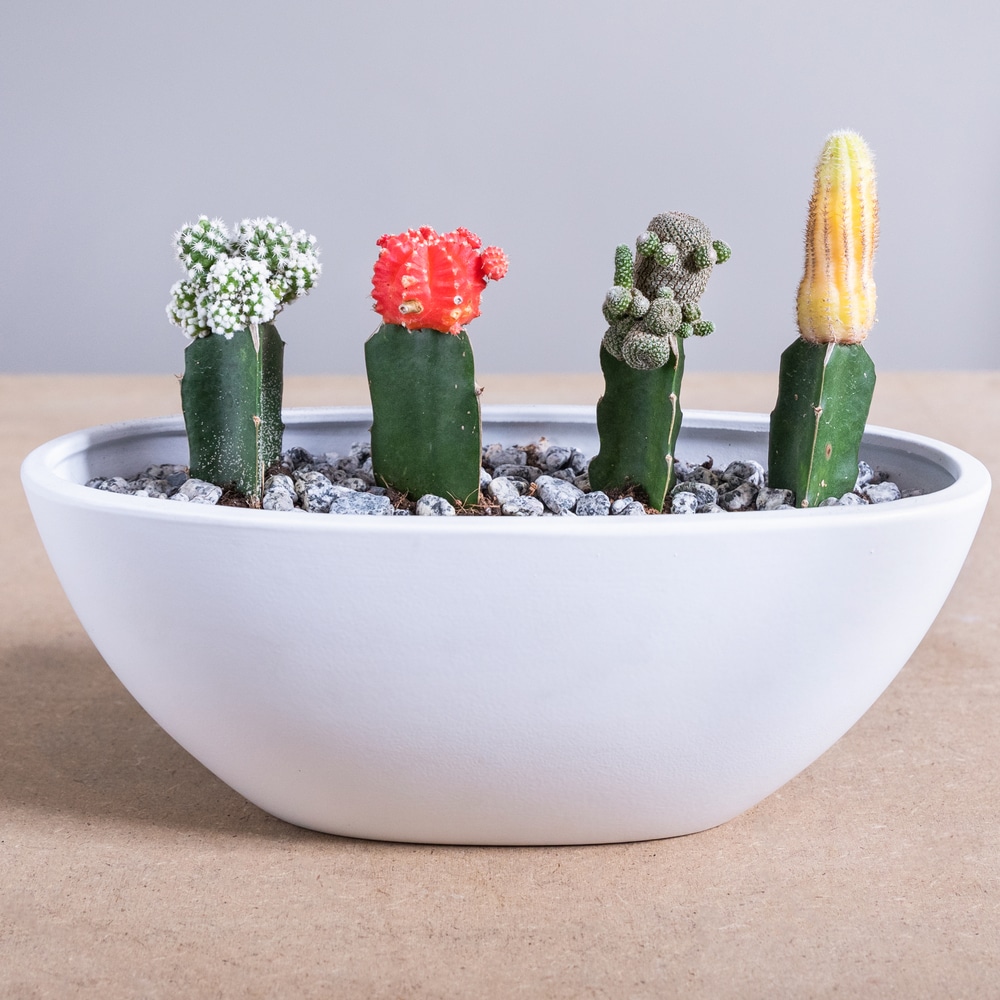
If you’ve ever gone to a gardening center, you’ve certainly seen moon cacti for sale. Wildly popular among houseplant enthusiasts, these brightly colored little cacti are easy to care for and are great for beginners.
Moon cacti are actually manmade creations, formed by grafting brightly colored moon cacti onto the stems of dragon fruit cacti. Coming in red, orange, pink and yellow, the moon cacti tops are actually lacking chlorophyll and are unable to survive on their own without the help of the dragon fruit stem to provide them with access to chlorophyll.
A native of South America, less is more when it comes to watering moon cacti as too much water can cause plant death. Plants should be watered sparingly during the growing season and even less during the cooler months. As the moon cacti don’t have chlorophyll, they are easily scorched by the sun and should only be exposed to indirect lighting. Unlike other varieties, moon cacti enjoy higher humidity conditions and can benefit from occasional misting.
Rattail cactus (Aporocactus flagelliformis)
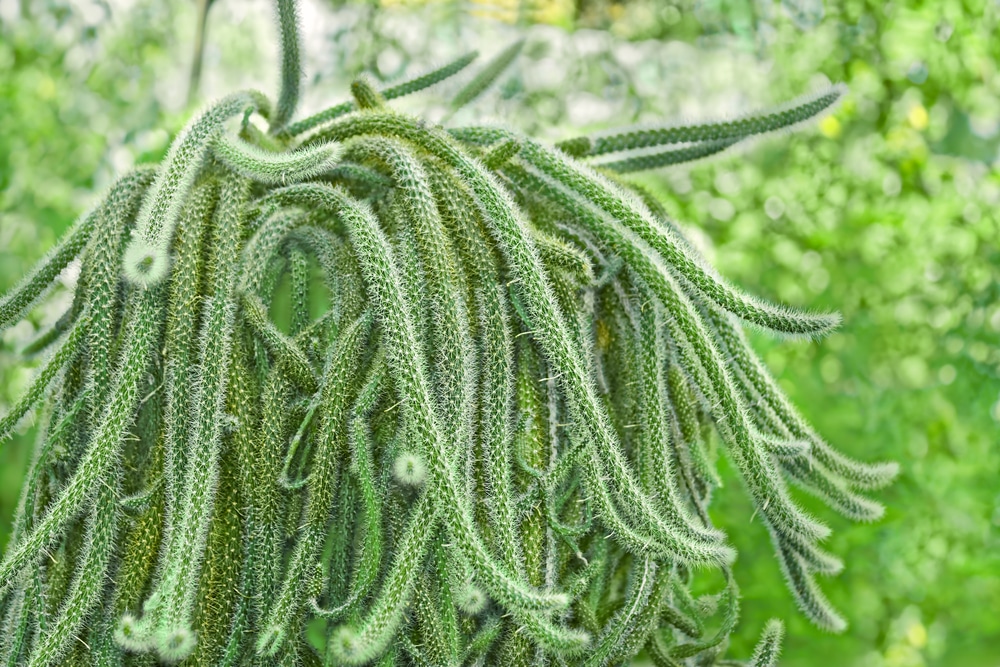
Named for its multitude of long, thin and trailing stems which are said to resemble a rat’s tail, rattail cacti are easy to care for and do well in hanging baskets. Their long stems can grow up to three feet long and are covered in rows of small, white spines. Under the correct conditions, rattail cacti will grow quickly and bloom large, magenta-colored flowers which have been used in traditional medicines.
Found in Mexico, rattail cacti should be watered regularly during the growing season; however, watering should be reduced significantly during winter.
Barrel cactus (Echinocactus grusonii)
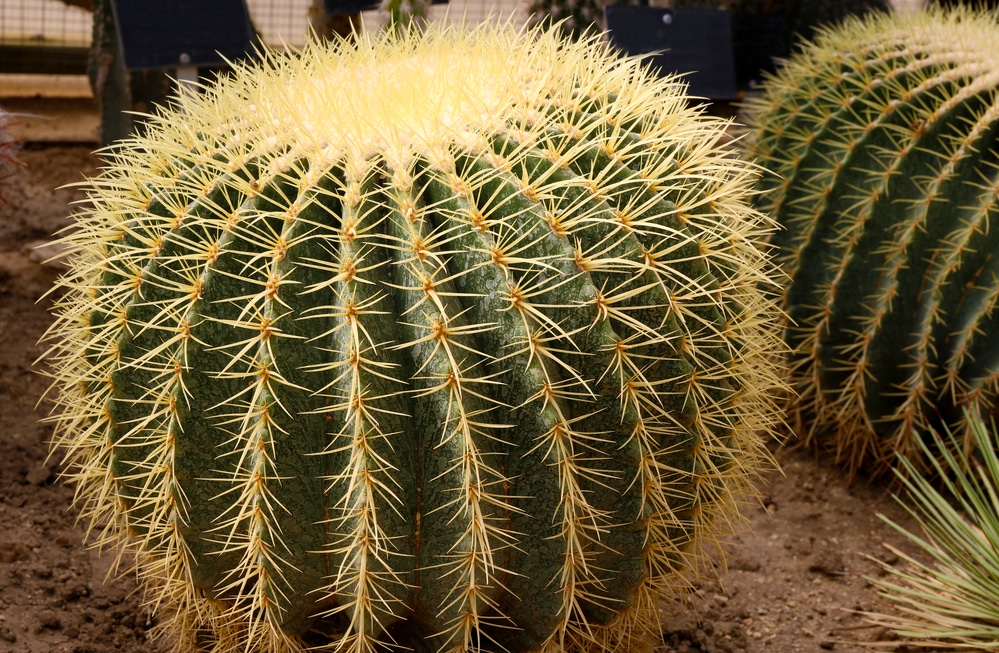
Native to the Southwestern United States, barrel cacti are cheery little specimens, notable for their long, sharp, white or pale yellow spines covering their bright green, edible flesh. A long-living species, barrel cacti can reach eight to ten feet tall when grown outdoors. Fortunately for houseplant lovers, they are slow-growing cacti and make great additions to windowsill plant displays.
Barrel cacti should be planted in a well-draining, sandy cactus mix and watered infrequently, allowing the soil to dry out completely between waterings. Full sun exposure is ideal; however, barrel cacti can tolerate indirect light too.
Bishop’s cap cactus (Astrophytum myriostigma)

Known for it’s deeply ridged stem, bishop’s cap cacti are said to resemble the hats worn by bishops. Lined with sharp, red spines, bishop’s cap cacti can grow up to three feet tall and are stunning specimens to add to a collection. When exposed to hot, bright sunlight, bishop’s cap cacti will bloom bright yellow flowers.
Only needing minimal moisture, soil should be allowed to dry out completely between waterings. Although adult cacti can handle full sun, when small, bishop’s cap cacti should only be exposed to indirect light to prevent sunburn.
Old lady cactus (Mammillaria hahniana)

Prized for its unique appearance, old lady cactus is covered with fuzzy-looking white hairs and spines. Under the correct conditions, this interesting cactus will bloom a circle of bright pink flowers around its top.
Old lady cacti require bright light and infrequent watering – approximately once every few weeks during the growing season and even less in winter. Like other cactus varieties, old lady cacti should be planted in a well-draining, sandy potting mix suitable for cacti.
Coral cactus (Euphorbia lactea)
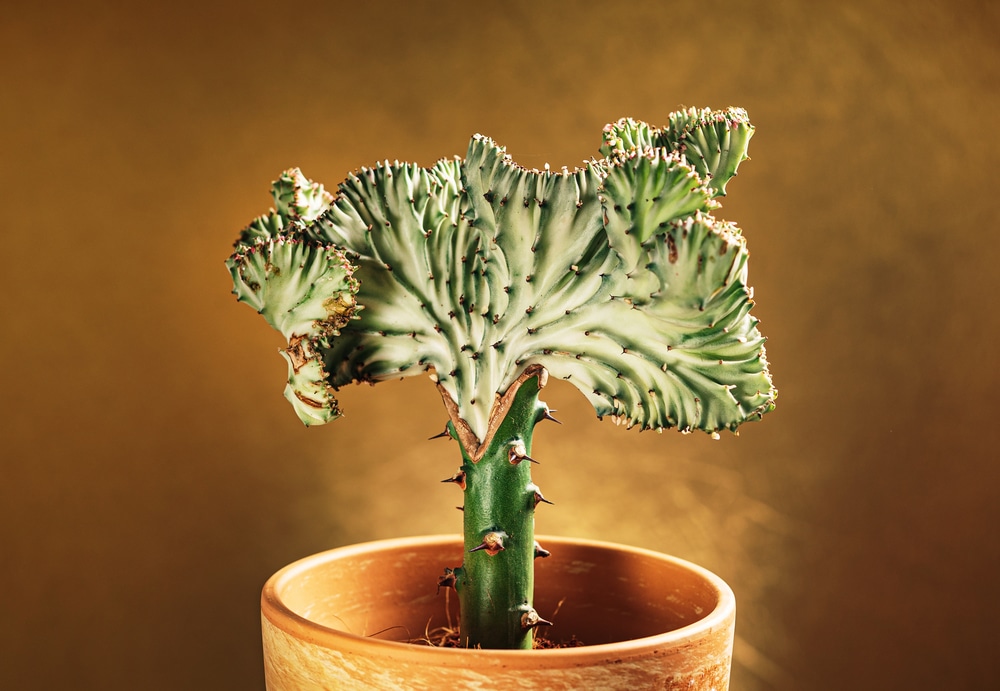
Resembling something from deep under the sea, coral cactus is famous for its large, fan-like growth, which frequently has hints of bright pink. A compact cactus, coral cacti rarely grow larger than nine to fifteen inches in height.
A native of Asia, coral cacti require bright, indirect light and need more frequent watering than most other cactus species; however, they still should be watered only sparingly.
Angel wings cactus (Opuntia microdasys)
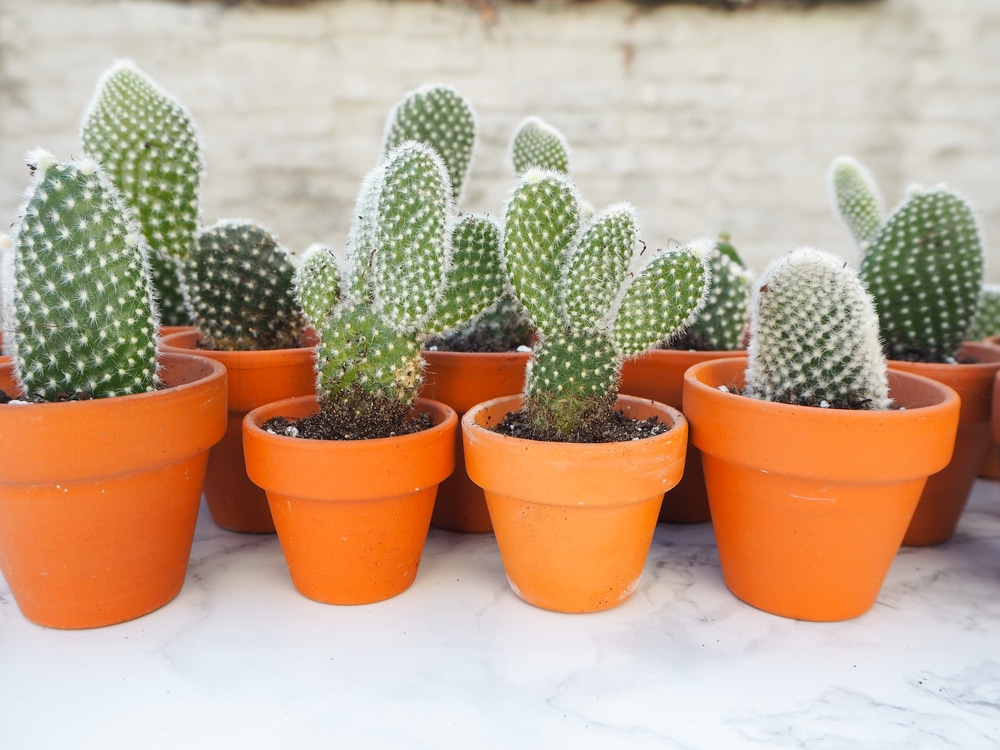
Also known as the bunny ear cactus, angel wing cacti are part of the prickly pear family, known for its clusters of rounded pads on top of lobe-shaped stems. Not as prickly as many cactus species, angel wing cacti are covered in clusters of small white hairs. In the correct conditions, this cactus will bloom yellow flowers which are then followed by red, edible fruit.
Only growing two to three feet tall, angel wing cacti require minimal watering and prefer bright sunlight.
Saguaro cactus (Carnegiea gigantea)
A native of the Southwestern United States, Saguaro cacti are common features of the Sonoran Desert; however, they make great houseplants too. Although they can grow up to 40 feet tall in nature, saguaro cacti can live for centuries and are very slow growing, so you don’t need to worry about them overwhelming your indoor space.
Featuring tall, cylindrical branching stems that are covered in sharp, ridged spines, saguaro cacti only need minimal watering and prefer bright light.
Star cactus (Astrophytum asterias)

Resembling stars with deeply ridged stems, star cacti are popular among enthusiasts, and with good reason. These petite cacti only grow up to six inches tall, but they pack a punch when they bloom a single, bright yellow flower. Star cacti don’t have spines; instead, they are covered in tiny white hairs.
Star cacti need bright light, so if you don’t have a brightly lit window to place them in, consider adding a grow light to your setup. Only needing minimal watering, star cacti are simple to care for and are one of the easiest cacti to propagate.
African milk tree (Euphorbia trigona)
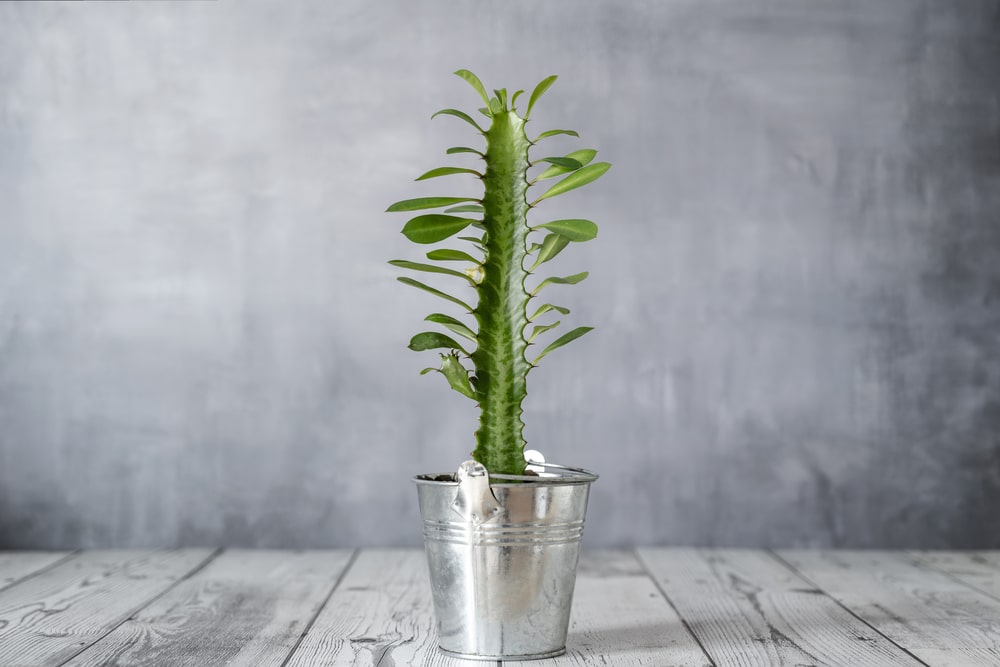
Also known as the cathedral plant, African milk trees have green or reddish-purple flesh, depending on the variety. Their tall, rigid stems are lined with small oval leaves alternating with small thorns. A slow grower, African milk trees can reach up to eight feet tall when fully matured.
Best planted in a well-draining cactus mix, African milk trees should be watered sparingly and prefer full to partial sun.
Baioensis (Euphorbia baioensis)
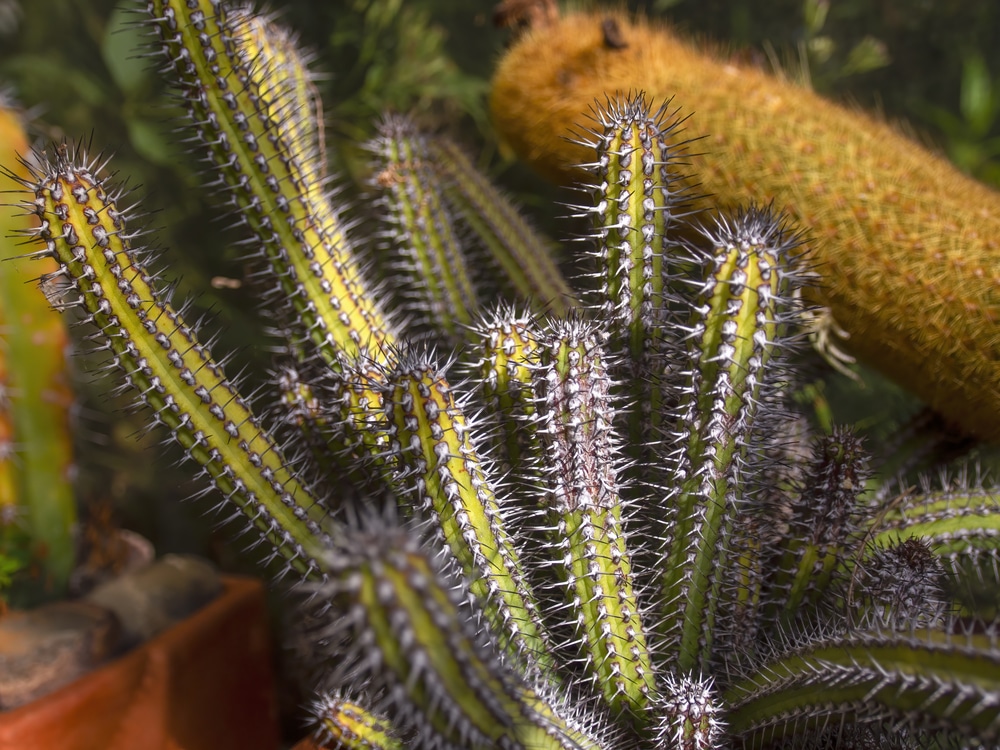
Originally found in Kenya, baioensis cacti have cylindrical, gray-green stems that grow eight to ten inches long and are covered in short, ridged spines. In spring and summer, baioensis will bloom small white or yellow flowers.
Preferring well-drained soil, baioensis should only be watered sparingly during the growing season when the top one to two inches of soil is dry to the touch. In winter, waterings should be reduced significantly. Unlike many other cacti, baioensis can benefit from regular fertilizing with a balanced fertilizer throughout the growing season. If you’re inclined to propagate your plants, this cactus is easily propagated using stem cuttings.
Fishbone cactus (Epiphyllum anguliger)
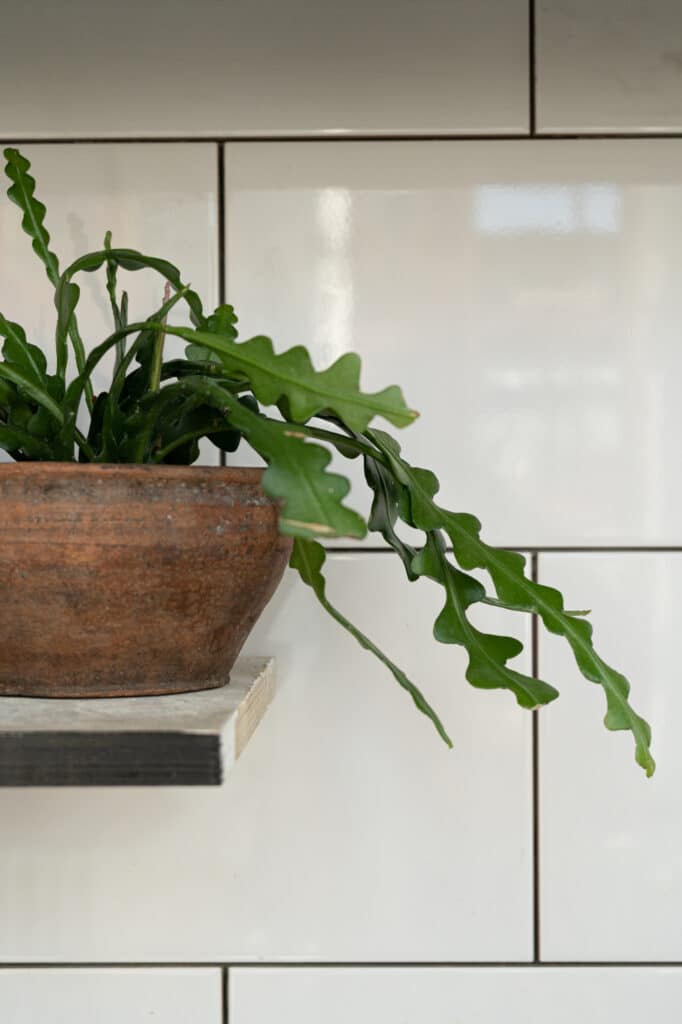
So named for its flat, zigzagged stems that resemble fishbones, fishbone cacti have smooth and spineless stems, making them great choices for homes with small children or curious house pets. Like rattail cacti, these cacti also do very well in hanging baskets.
Native to Mexico, fishbone cacti prefer indirect, moderate light and should only be watered sparingly. Under the right conditions, these cacti will bloom fragrant white or yellow flowers that last only for a day or two so be sure to enjoy them!
Desert candle cactus (Euphorbia acrurensis)
Native to South and West Africa, the desert candle cactus is known for its tall, smooth stems that are lined with short, rigid thorns. When fully mature, this species will grow between five and eight feet tall but is usually sold at garden centers in much smaller sizes.
Preferring well-draining soil, desert candle cacti require bright light, only need minimal watering and generally don’t need fertilizer.
Organ pipe cactus (Stenocereus thurberi)

Like the saguaro cactus, organ pipe cacti also hail from the Sonoran Desert of the American Southwest. Growing up to sixteen feet tall, it is a large species that closely resembles its relative, the saguaro; however, it is bushier, with multiple green, tubular arms that are said to resemble the tubes of a pipe organ. Covered with rigid spines, when it blooms, the organ pipe cactus has stunning white flowers that perch on top of each arm.
A slow growing species, organ pipe cacti grow in rocky and dry conditions. As a houseplant, this species should be potted in a cactus mix or a mixture of peat moss, perlite and sand and watered once a month or less.
Christmas cactus (Schlumbergera bridgesii)
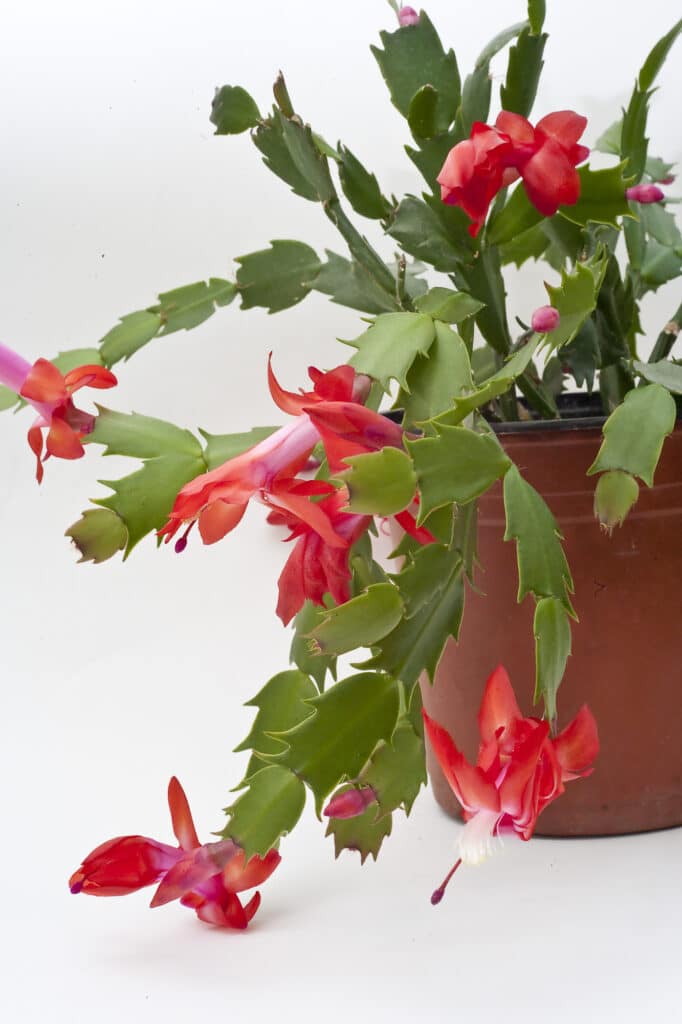
One of the most popular cactus species among houseplant enthusiasts, Christmas cacti are sure to please. Ideal for hanging baskets where its long, segmented, smooth leaves will be showcased, Christmas cacti have soft spines that don’t prick. In mid-winter, triggered by the cooler temperatures and shorter days, Christmas cacti bloom an abundance of large red, pink, orange or white flowers.
Naturally found in the Brazilian rainforests, where they grow on trees as epiphytes, Christmas cacti prefer filtered light and need more frequent waterings than many other cactus species. However, although they love moisture, the soil should be allowed to dry out completely in between waterings.
Nearly identical to the Christmas cactus, the Thanksgiving cactus is a similar species but has slightly differently shaped leaves.
Conclusion
Whether you prefer traditional looking cacti with sharp spines, like the saguaro, or you’re looking for a spine-free cactus that will be safe for small children, there is a cactus for you. Cacti are an incredibly diverse group of houseplants that come in all ranges of shapes and sizes — some are slow-growing, some do well in hanging baskets, and some are even grown for their edible fruit. Whatever you prefer, you are sure to find a species that will add interest and joy to your collection.

